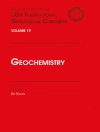This book presents comprehensive reviews on the latest developments of nanotechnologies to detect and remove pollutants in water, air and food. Polymer nanocomposites, nanoparticles from microbes and application of nanotechnologies for desalination and agriculture are also addressed. Pollution of water and air by contaminants and diseases is a major health issue leading globally to millions of deaths yearly, according to the World Health Organization, and such an issue requires advanced methods to clean environmental media.
Mục lục
Preface.- About the Editors.- 1. Nanotechnology for water and wastewater treatment using graphene semiconductor composite materials (Penny P. Govender).- 2. Dyes depollution of water using porous Ti O2-based photocatalysts (Jean-Luc Blin).- 3. Application of nanobiosensors in food safety monitoring (Ragh HV).- 4. Translational approach of modification of functional properties of nano porous membranes for the desalination of water (Velayudhaperumal Chellam Padmanaban).- 5.Nanotechnology in wheat production and protection (Prem Lal Kashyap).- 6. New drugs for bad bugs: bioprospection of new nanoparticles and specialized metabolites from Actinobacteria (Analía Álvarez).- 7. Titanium oxide-based nanomaterials with photocatalytic applications in environmental chemistry (Santiago Gómez-Ruiz).- 8. Polymer nanocomposites: synthesis and characterization (A L Sharma). 9. Application of nanotechnology in agriculture (Pragati Pramanik).- 10. Nanomaterial-based sensor for air pollution control (Pradip Kar).
Giới thiệu về tác giả
Dr. Nandita Dasgupta has vast working experience in nanoscience and is working as Assistant Professor at Department of Biotechnology, Institute of Engineering and Technology, Lucknow, India. She has worked on Mesenchymal stem cell derived exosomes for the treatment of uveitis. She has successfully engineered micro-vehicles for model drug molecules. Her areas of interest include nanomaterial fabrication and its applications in medicine, food, environment, agriculture and biomedical.She is the associate editor of Environmental Chemistry Letters. She has received several awards and recognitions from different national and international organizations.
Dr. Shivendu Ranjan is scientist at the DST-Centre for Policy Research, Lucknow, India. He is also serving as a senior research associate, adjunct, at the Faculty of Engineering and Built Environment, University of Johannesburg, South Africa. His research interests include nanotechnology, nanomedicine, science policy and diplomacy.He is associate editor of Environmental Chemistry Letters and editorial board member of Biotechnology and Biotechnological Equipment. He has received 20 awards and honors.
Dr. Eric Lichtfouse is an environmental chemist working at the University of Aix-Marseille, France. He has invented carbon-13 dating. He is teaching scientific writing and communication, and has published the book Scientific Writing for Impact Factors. He is founder and Chief Editor of scientific journals and series in environmental chemistry and agriculture. He got the Analytical Chemistry Prize from the French Chemical Society, the Grand Prize of the Universities of Nancy and Metz, and a Journal Citation Award by the Essential Indicators.












